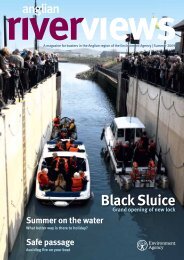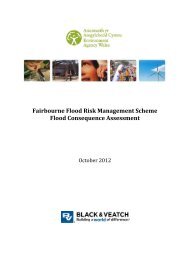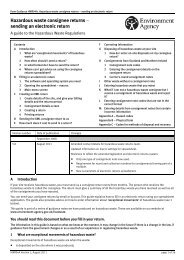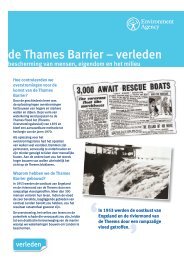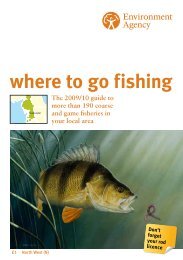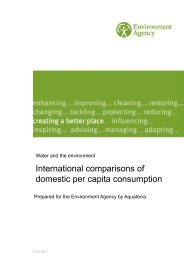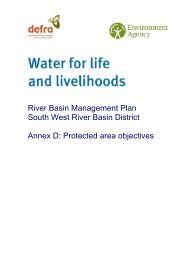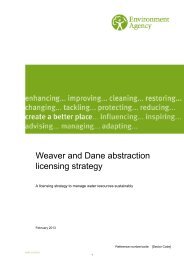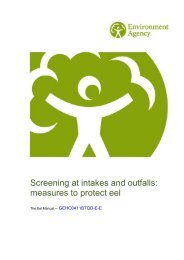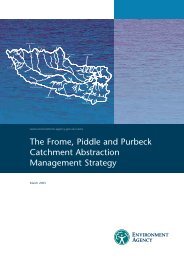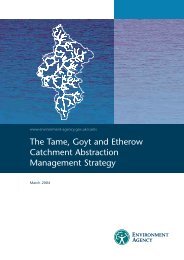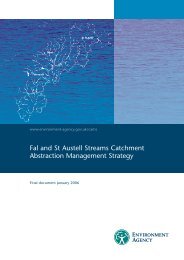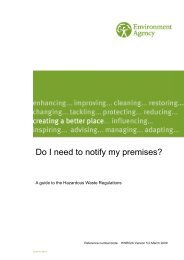Karenia mikimotoi
Karenia mikimotoi
Karenia mikimotoi
Create successful ePaper yourself
Turn your PDF publications into a flip-book with our unique Google optimized e-Paper software.
From the Florida Fish & Wildlife Research Institute:<br />
http://research.myfwc.com/support/view_faqs.asp?id=13<br />
FAQs<br />
How is red tide related to respiratory irritation?<br />
People experience respiratory irritation (coughing, sneezing, and tearing)<br />
when the red tide organism (K. brevis) is present along a coast and winds<br />
blow its toxic aerosol onshore.<br />
CAUTION: People with severe or chronic respiratory conditions (such as<br />
emphysema or asthma) are advised to avoid red tide areas. Generally,<br />
symptoms are temporary. Once exposure is discontinued, symptoms<br />
usually disappear within hours.<br />
Is it safe to swim during a red tide?<br />
Yes, swimming is safe for most people. However, red tide can cause some<br />
people to suffer from skin irritation and burning eyes. Use common sense.<br />
If you are particularly susceptible to irritation from plant products, avoid red<br />
tide water. If you experience irritation, get out of the water and thoroughly<br />
wash. Do not swim among dead fish because they can be associated with<br />
harmful bacteria.<br />
From the Texas Department of State Health Services (TDSHS) Seafood and Aquatic<br />
Life Group http://www.dshs.state.tx.us/seafood/RedTide.shtm :<br />
Other symptoms associated with K. brevis blooms<br />
Classically, NSP produces gastrointestinal and neurologic symptoms<br />
associated with ingestion of shellfish containing high levels of brevetoxins.<br />
However, some individuals have experienced respiratory, mucous<br />
membrane, and skin irritation simply by walking on the beach during this<br />
and other K. brevis red tides. Unlike the Alexandrium species of red tide<br />
organisms, which affect the North Atlantic and North Pacific coasts, <strong>Karenia</strong><br />
species possess an outer shell that is very fragile and easily disrupted by<br />
the vigorous mechanical action of the surf. On disruption, <strong>Karenia</strong><br />
organisms release cellular endotoxins into the surrounding water. Wind and<br />
surf action produce a fine aerosol that generally travels only a short<br />
distance from the beach. Thus, in areas with a great deal of surf action,<br />
airborne exposure to the toxins can be a problem for some individuals.<br />
Alexandrium species have a hard outer shell that is not easily disrupted, so<br />
airborne exposure is generally not a problem in red tides along the Pacific<br />
coast or the northern Atlantic coast.<br />
Exposed individuals frequently report an acute but rapidly reversible<br />
syndrome consisting of conjunctival irritation, rhinorrhea, sneezing, cough<br />
and (rarely) respiratory distress similar to an asthma attack. Persons<br />
swimming or wading in K. brevis red tides may experience eye and skin<br />
irritation accompanied by redness and itching. Following short-term<br />
exposures, the symptoms usually subside when the individual leaves the<br />
immediate vicinity of the beach. Prolonged exposure, however, can cause<br />
symptoms that linger for hours or days after the person leaves the affected<br />
area. Consequently, DSHS recommends that visitors to the affected areas<br />
avoid swimming or wading in red tide waters.<br />
32 A Literature review of the potential health effects of marine microalgae and macroalgae



